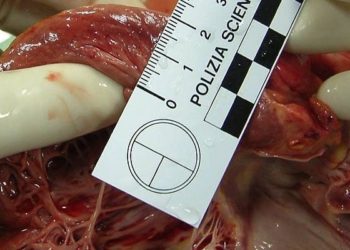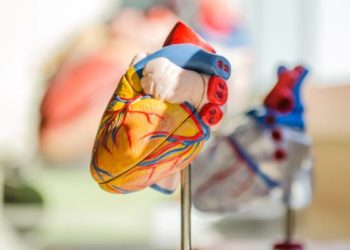2 Minute Medicine Rewind June 2 – June 8, 2014
In this section, we highlight the key high-impact studies, updates, and analyses published in medicine during the past week.
Single-Dose Oritavancin in the Treatment of Acute Bacterial Skin Infections
Currently, severe soft tissue and skin infections are treated with many days of intravenous antibiotics, requiring prolonged hospitalization or discharge to skilled nursing facilities. Oritavancin is a bactericidal lipoglycopeptide with long half-life and activity against gram positive bacteria. In this randomized trial, more than 900 patients were randomized to a single intravenous dose of 1200mg oritavancin or twice daily intravenous vancomycin for 7 to 10 days. The investigators deemed oritavancin noninferior to vancomycin based off primary endpoint of investigator-assessed clinical cure (82.3% vs. 78.9%, 95% CI: -1.6 to 8.4%) and proportion of patients with 20% or greater reduction in lesion size (86.9% vs. 82.9%, 95% CI -0.5 to 8.6%). The efficacy was similar when stratified by pathogen type, including for methicilin-resistant S. aureus.
Professional society guidelines currently recommend the implantation of prophylactic implantable cardioverter-defibrillators (ICDs) in patients with heart failure and a left ventricular ejection fraction (LVEF) less than 35%. Many patients in the United States receive ICDs at an LVEF between 30 to 35%, and this study sought to characterize the efficacy of such intervention. This retrospective case-cohort study examined Medicare beneficiaries in the National Cardiovascular Data Registry ICD registry with an LVEF between 30-35% and matched patients without ICDs in the GWTG-HF database. The 3-year all-cause mortality rate was lower in the cohort with an ICD (51.4% vs. 55%, p = 0.04). The study was also repeated with patients with an LVEF less than 30% and similar results were obtained (3-year all cause mortality: 45.0% vs. 57.6% p < 0.001). There was a larger difference in patients with an LVEF less than 30%, but even in patients with LVEF between 30-35%, there was a significant decrease in 3 year mortality.
The Patient-Centered Medical Home, Electronic Health Records, and Quality of Care
There has been an increased push for the patient-centered medical home model (PCMH) of primary care. Attributes include using electronic medical records, organizational changes, and bundled payments. In this prospective cohort study between 2008 to 2010, investigators in New York compared primary care physicians in 312 practices based on the use of PCHM model, practices just using electronic records, or practices using paper records. The investigators found the PCMH group had the greatest improvement over the study time for frequency of eye exams and Hgb A1c for diabetic patients, chlamydia screening, and colorectal cancer screening (p < 0.05). The investigators recognize several important confounders, including that larger practices with more resources were most like to adopt the PCMH model.
Adverse Health Effects of Marijuana Use
With the shifting legal landscape for marijuana use in the United States, physicians are increasingly asked about the potential benefits and risks to marijuana use. While there is still significant debate about the evidence for harm in marijuana, this review article details the strongest evidence for benefits and adverse health effects in recreational use. The article cites evidence for benefit in symptomatic treatment of glaucoma, nausea, AIDS-associated anorexia and wasting, chronic pain, disturbed sleep and spasticity with multiple sclerosis, and epilepsy. There is strong evidence for an adverse effect on brain development, particularly during adolescence or young adulthood. Additionally, this review article highlights there is addictiveness in long term marijuana use and evidence for cannabis withdrawal syndrome.
Kidney Function After Off-Pump or On-Pump Coronary Artery Bypass Graft Surgery
Hypoperfusion of the kidney, particularly intraoperatively in the setting of large surgeries, has been previously shown to cause acute kidney injury manifest as sudden postoperative increases in serum creatinine. However, such injury is unknown to have significant long term impact on kidney health or function. The international multicenter CORONARY study enrolled 4752 patients and randomized patients to receive coronary artery bypass graft (CABG) surgery) either with cardiopulmonary bypasss or with a beating-heart technique (off-pump). Off-pump CABG surgery reduced the risk of acute kidney injury (17.5% vs. 20.8%, p = 0.01) however there was no significant difference in loss of kidney function at 1 year (17.1% vs. 15.3%, p = 0.23). Acute ischemic kidney injury did not appear to alter long term kidney function, and there was no evidence of better preserved kidney function with off-pump CABG surgery.
Image: PD
©2012-2014 2minutemedicine.com. All rights reserved. No works may be reproduced without written consent from 2minutemedicine.com. Disclaimer: We present factual information directly from peer reviewed medical journals. No post should be construed as medical advice and is not intended as such by the authors or by 2minutemedicine.com. PLEASE SEE A HEALTHCARE PROVIDER IN YOUR AREA IF YOU SEEK MEDICAL ADVICE OF ANY SORT.







